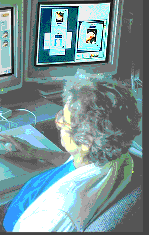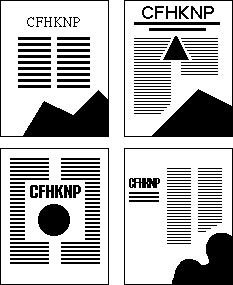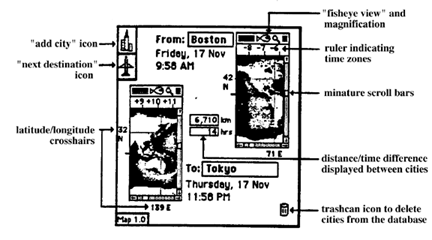
Another version of this article was published in Communications of the ACM, Vol. 39, No. 6, August 1996, pp. 38-48

Muriel Cooper [1925-1994] was a reknown graphic designer who had a vision of computer-based tools that could actively participate in the process of dynamic visual expression. Her interest in supporting the design process with intelligent tools led her to make artificial intelligence one of the major themes of her research group, the Visible Language Workshop [VLW]. Home to people of both visual design and computer backgrounds, the VLW embodied the best of the interdisciplinary spirit in which the MIT Media Lab was founded. During an era in which intelligent design applications were ignored by both the AI and computer graphics communities, the VLW supported a range of projects in this area, from automatic layout to graphical editors that can learn from examples. This paper surveys some of the history, research themes, and projects of the Visible Language Workshop.
Henry Lieberman

IEEE Symposium on Visual Languages, 1995.
Graphic designers and other visual problem solving experts now routinely use computer-based image-editing tools in their work. Recently, attempts have been made to apply learning and inference techniques from artificial intelligence techniques to graphical editors [Lieberman 92, Weitzman 93, commercial products as Aldus Intellidraw] in order to provide intelligent assistance to design professionals. The success of these attempts will depend on whether the programs can successfully capture the design knowledge of their users. But what is the nature of this knowledge? Because AI techniques have usually been applied in such areas as medicine or engineering rather than visual design, little is known about how design knowledge might differ from knowledge in other fields. I conducted an informal knowledge engineering study to try to understand how knowledge is communicated between humans in graphic design. Nowhere is the process of design communication more critical than in teaching beginning designers, since the effectiveness of the communication is crucial to the success of the student. I surveyed books intended to teach graphic design to novices, and tried to analyze the nature of the communication with a view toward applying the results to a knowledge acquisition system for graphic design applications. This paper reports what I learned.
in The Art of Human-Computer Interface Design, Brenda Laurel, ed., Addison-Wesley,August 1989

Computer programmers and graphic designers appear to operate in distinctively different worlds. Yet as computer systems become more graphic and communications media more interactive, experts in the two disciplines find themselves increasingly called upon to deal with the same subject: the design of interactive graphical software. Can this shotgun marriage be made to work?
The literature provides little documentation of the actual analysis and decision-making processes used by programmers and graphic designers in the development of interactive applications. Each profession has a stereotypical view of the other: graphic designers are "beautifiers" who make things look pretty after they are made to work; programmers are "feature-freaks" who could care less how a thing looks as long as the code is elegant. I (Vertelney) posed Arent and Lieberman a user interface problem--the redesign of the interface of an existing Macintosh control panel module called Map--and recorded their thought processes as they worked on it. I limited the two sides to exactly four hours to perform the design task in hopes of forcing the key issues to the fore.